BRÜHL LOCATIONS IN SAXONY

The Alfriedstein vineyard in Radebeul, part of Niederlössnitz, goes back to the state vintner Friedrich Roos, who acquired extensive vineyard property in Niederlössnitz from 1734. From 1742 to 1745 he had a baroque manor house built in the vineyard. The Roos family sold the estate in April 1763 to the Saxon prime minister Count Heinrich von Brühl, who was looking for an intact property after the plundering and destruction of his properties in the Seven Years' War.
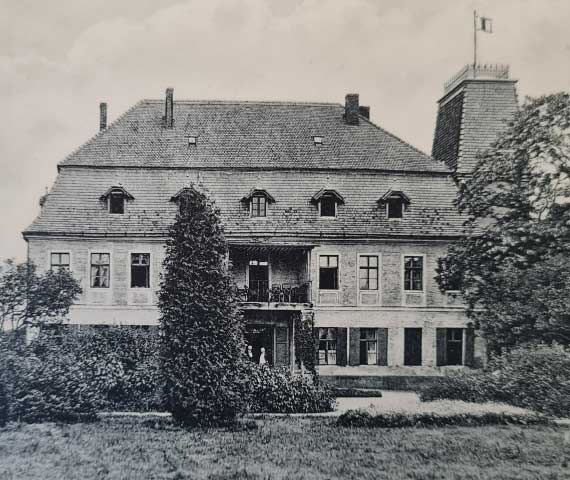
Bollensdorf Estate in Lower Lusatia was purchased by Count Heinrich von Brühl in 1756. In his will, he bequeathed the estate to his secretary Carl Heinrich von Heineken (1707-1791) in gratitude for 24 years of loyal service. In 1775, Heineken established the right of succession. His descendants held the estate until the 1945 Land Reform. The last owner was Margarethe Freifrau von Bischoffshausen, née von Heineken, with whom the family died out in 1952. The Bollensdorf manor house was looted and razed to the ground in the last days of the Second World War.
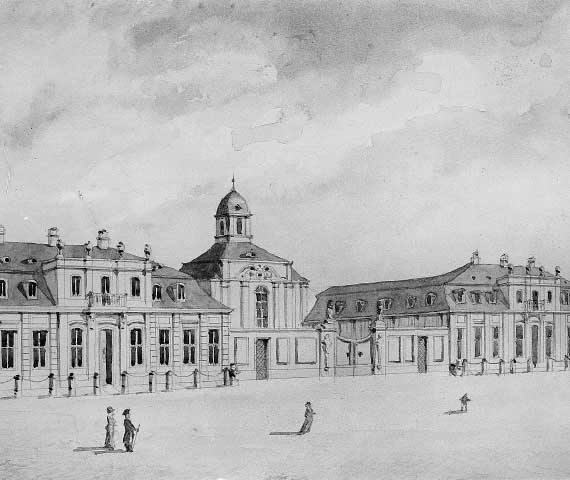
Princess Ursula Katharina of Württemberg, also known as Princess of Teschen, a former mistress of Augustus the Strong, had a garden palace built in her stately garden in Dresden-Friedrichstadt in 1727-28. In 1736, Heinrich von Brühl bought the garden and the palace, which he had rebuilt and extended with side wings according to plans by Johann Christoph Knöffel. In 1763, the Order Festival of the Polish Order of the White Eagle was celebrated in the Brühl Garden.
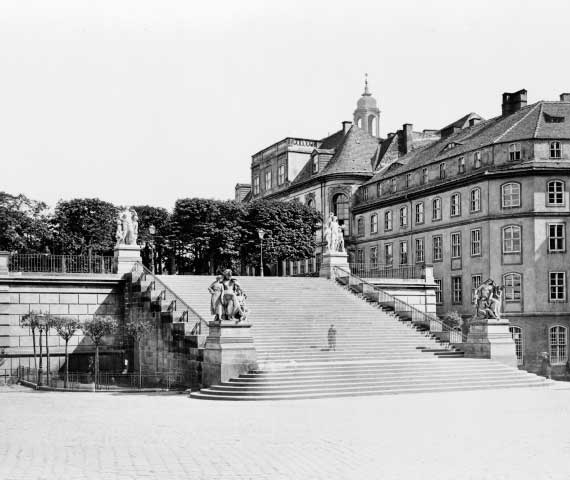
Count Brühl's main residence was a palace in the centre of Dresden, between Augustus Strasse and Brühl’s Terrace, which was built from 1734 onwards according to plans by Johann Christoph Knöffel and extended several times until 1763. It was connected via a bridge to the ramparts facing the Elbe, on which Count Brühl had a garden with fountains and buildings built from 1739. The Brühl Garden was filled with the "Brühl's Glories". These included the Brühl Library, the art gallery, the Belvedere and the Brühl Garden Pavilion.

In 1746, Count Heinrich von Brühl bought the town and office of Forst in Lower Lusatia and combined this property with the Pförten estate on the right-hand bank of the Lusatian Neisse. He used the palace in Pförten as his residence, while a cloth and linen manufactory was established in the Forst palace. He designated the Protestant town church of St. Nikolai in Forst as the main church of his Lower Lusatian domain.
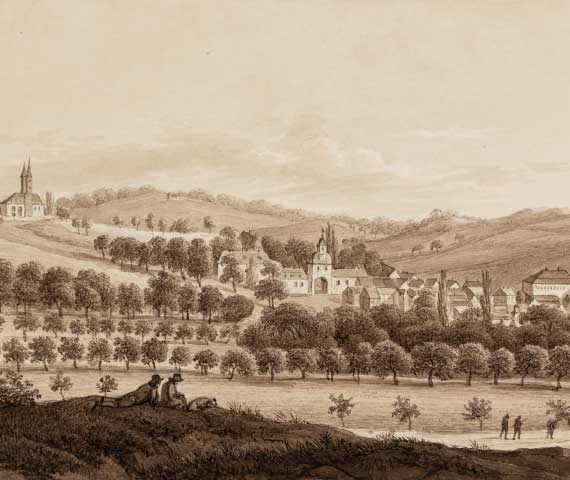
Gangloffsömmern near Weissensee in Thuringia was the oldest property of the Counts of Brühl. Parts of the estate were already owned by the family in 1479. The site was in the Thuringian district of the Electorate of Saxony. In 1738, Count Heinrich von Brühl and his siblings sold the manor to Duke Johann Adolph II of Saxony-Weissenfels.
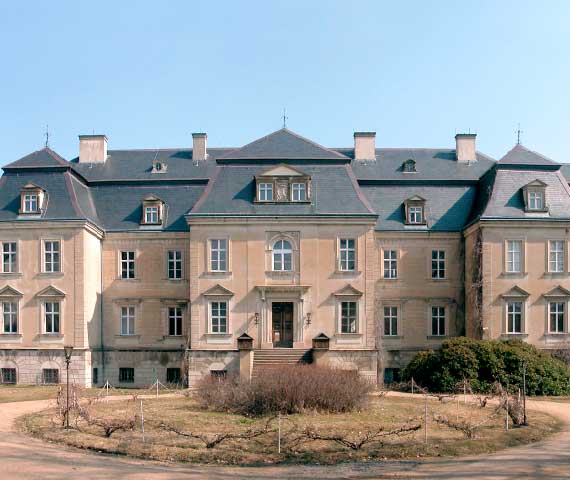
In 1747, Count Heinrich von Brühl bought the Upper Lusatian manors of Gaussig and Diehmen from the heirs of the von Neitschütz family. He also took over the stately baroque castle in Gaussig, built around 1700. In 1750 he sold the estate to Count Hermann Carl von Keyserlingk (1696-1764), then Russian envoy to the Prussian court in Berlin. In 1766 Gaussig passed to Peter von Riaucour. His son Andreas amassed extensive property, which remained in the possession of his descendants, the Counts of Schall-Riaucour, until 1945. After the Land Reform, the palace served as a recreation centre for the TU Dresden.

Grochwitz near Herzberg/Elster was Heinrich von Brühl's first estate. He bought it in 1731 from Carl Gottlieb von Römer, aged only 31 years old at the time. In 1736 he had an impressive palace built to a design by Samuel Locke. The central wing was vaulted with a dome from which a lantern and an obelisk extruded, giving the palace building an idiosyncratic accentuation.
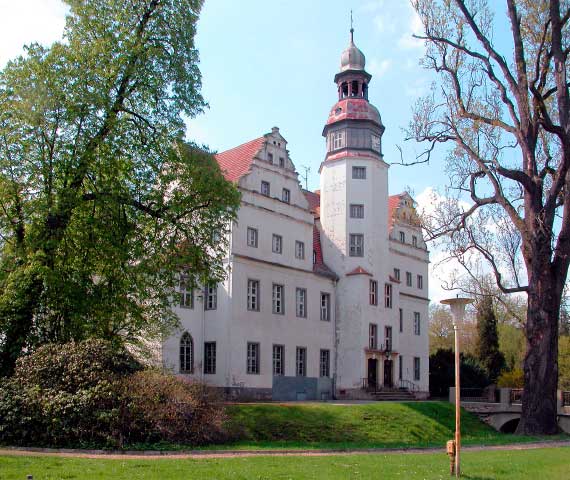
Lindenau near Ortrand, today in Brandenburg, was the easternmost town in the Margraviate of Upper Lusatia. The palace developed from a medieval moated castle on the border of Upper Lusatia with the Mark of Meissen. In 1744, Count Heinrich von Brühl bought the estate and palace of Lindenau, as well as the neighbouring Tettau estate. Brühl took over a renaissance building with a dominating staircase tower. There is no evidence of building work on this estate, nor is it known how often the prime minister visited Lindenau. In 1758 Prussian soldiers devastated the palace. Brühl's heirs sold the estates of Lindenau and Tettau to the von Vieth family in 1780. From 1833 to 1945 Lindenau was in the hands of the counts and princes zu Lynar. Around 1920, the palace was rebuilt and extended in neo-baroque style. During the years of the GDR it was used as a children's home.
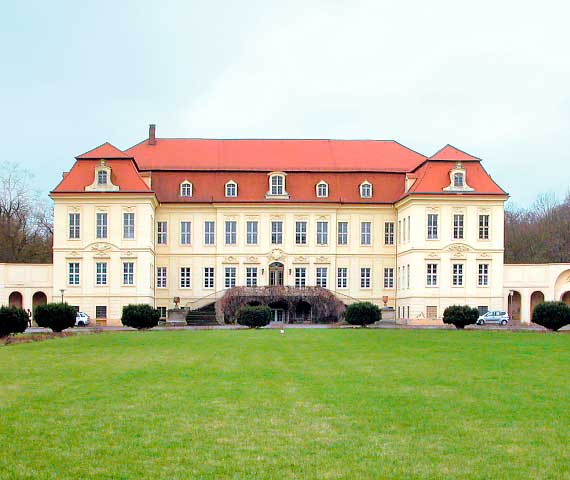
Count Heinrich von Brühl bought Nischwitz Palace near Wurzen from a mistress of the King of Great Britain and Ireland, Marianne Amalie Sophie von Wallmoden, in 1743. Brühl's architect Johann Christoph Knöffel converted an older baroque manor house, which had been built between 1714 and 1720, into an imposing three-winged complex from 1745 onwards, which still gives an impression of splendour and artistic enjoyment today.
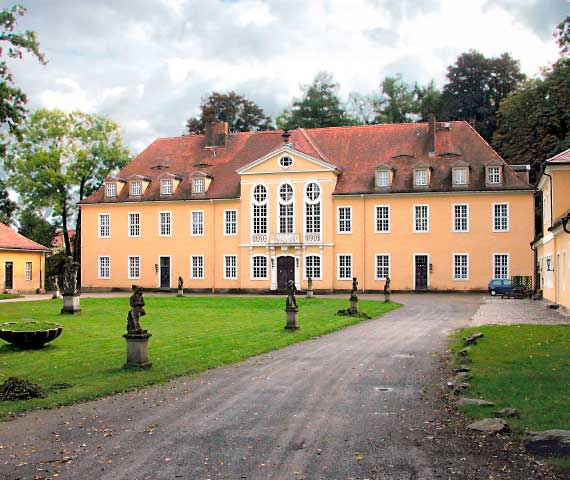
Oberlichtenau Castle is one of the most beautiful baroque noble residences in Upper Lusatia. Christian Gottlieb von Holtzendorff (1696-1755) had it built from 1726. In 1744, he sold the castle together with the manor of Ober- and Niederlichtenau to Count Heinrich von Brühl. An extensive French garden was laid out for the prime minister, who, however, rarely visited Oberlichtenau. In 1760, King Frederick II of Prussia had the castle destroyed. Brühl's heirs sold Oberlichtenau in 1774 to Count Andreas von Renard, who was succeeded by the influential minister Camillo Count Marcolini. From 1948 to 2005, the castle housed a children's home.
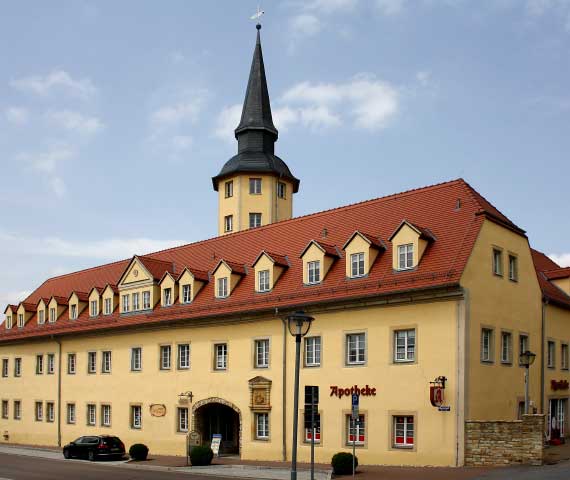
The estate of Pesterwitz did not come into being until 1651. The electoral secretary Christian Reichbrodt von Schrenkendorf created it from four farms he had acquired and had the manor house that still exists today built. In 1737 Count Heinrich von Brühl bought this estate, probably as a capital investment.
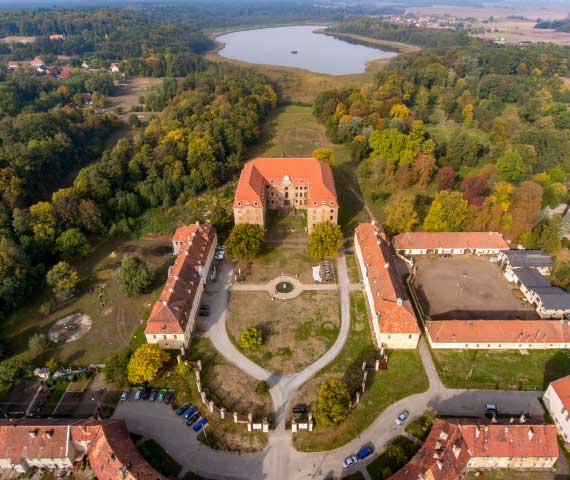
In 1740, Count Heinrich von Brühl bought the Lower Lusatian manor of Pförten from the heirs of Count Christoph Heinrich von Watzdorf. In the following years he acquired other manors in the area: Zauchel (Suchodół), Datten (Datyń), Jehser (Jeziory Dolne) and Kohlo (Koło) - and finally the town and office of Forst in 1746. The Forst-Pförten property created by Brühl was the second largest governance in Lower Lusatia.
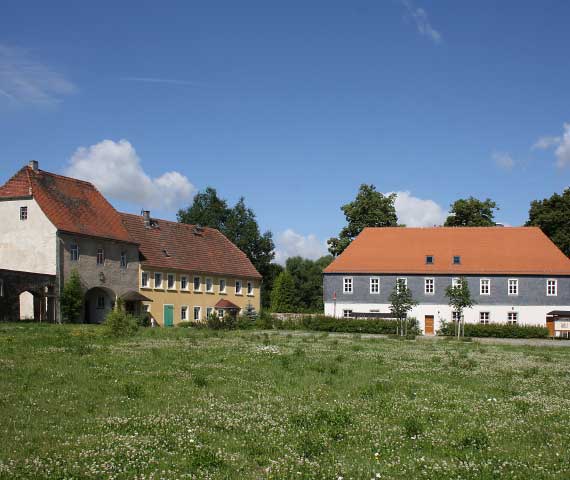
Only one day after the purchase of the Gaussig manor, Count Heinrich von Brühl acquired the Putzkau manor southeast of Bischofswerda in 1747 for 60,000 Taler. When it was handed over, the Neuhof was in a poor state. Apparently Brühl succeeded in getting the farm running again.
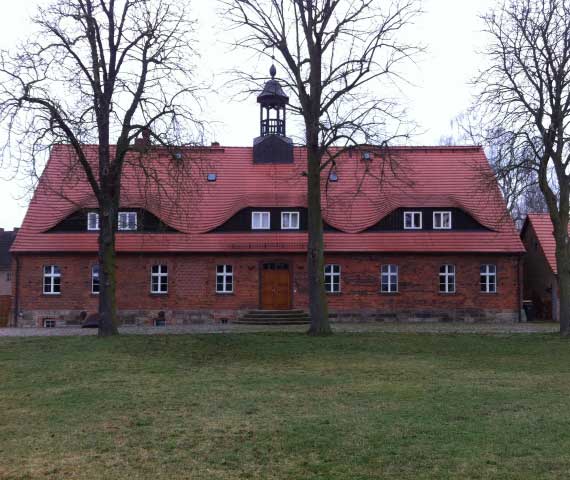
After Heinrich von Brühl had acquired the estate of Grochwitz in 1731, he also bought neighbouring Rahnisdorf manor in 1734. Since then, both estates have formed a joint business. Only the palace in Grochwitz was inhabited. After the devastation by Prussian soldiers in 1758, Count Heinrich von Brühl sold the estates to Adolph Christian Wendler in 1761. In 1821, both estates passed to the von Palombini family.
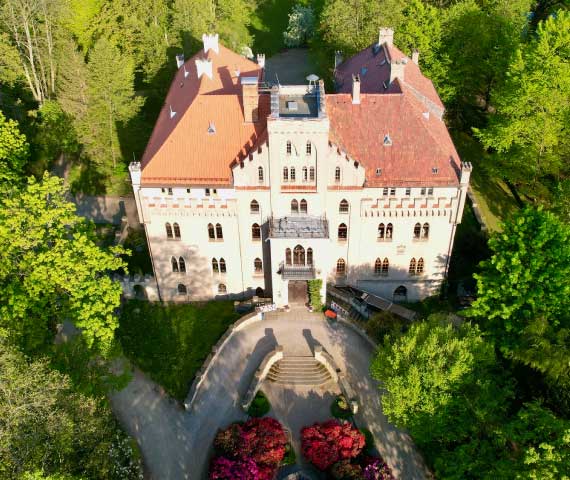
Count Heinrich von Brühl was rewarded several times by kings Augustus II and Augustus III with entitlements to manors where the owning family was expected to die out due to a lack of descendants. In 1732, for example, he was awarded Seifersdorf. When Hans Georg von Grünrodt died in Seifersdorf in 1747 without leaving any male heirs, the estate came to the prime minister, thanks to the entitlement. Whether Count Heinrich von Brühl ever visited Seifersdorf is not documented with certainty. After his death, the estate was initially placed in receivership. In order to pay off debts, the sons had to gradually sell the estate. Count Hans Moritz von Brühl, the youngest son of the prime minister, initially received the manor of Zschepplin near Eilenburg from the estate. When it became apparent that it would be impossible to maintain this property, he decided in 1774 to take over Seifersdorf manor, which had a much lower value.
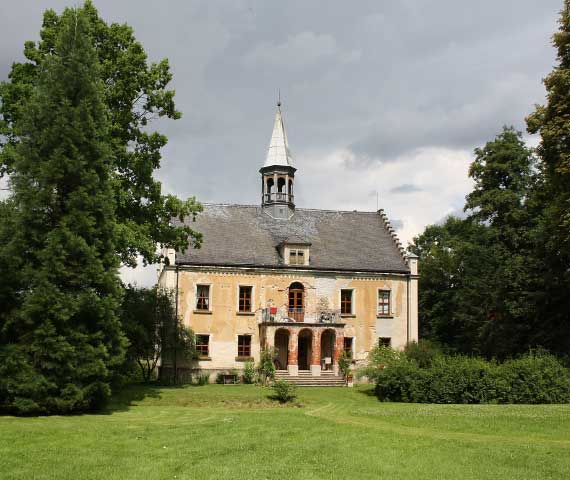
Weidlitz Estate near Bautzen came into the possession of the prime minister of Saxony in 1746. He bought the estate from Jacques Le Coq, but sold it at a loss to the Dresden chancery secretary Friedrich Philipp Lingke in 1749. Through his daughter, the property passed to the Hermann family, who managed the estate until 1945. Nothing has survived from the Brühl period. The manor house was rebuilt in 1842-43. The estate was dissolved in 1945.

With the proceeds from the sale of the Grochwitz and Rahnisdorf estates, Count Heinrich von Brühl acquired Zschepplin Palace near Eilenburg in 1761. Zscheppelin Palace was an imposing, but at that time outdated palace complex in renaissance style. In order to be able to live in this palace, he had a late Baroque wing added to the four-wing complex from 1762 onwards, which was probably designed by Friedrich August Krubsacius.
Freundeskreis Schlösserland Sachsen e.V.
In Kooperation mit Schlösserland Sachsen | www.schloesserland-sachsen.de
Stauffenbergallee 2a | 01099 Dresden | Telefon +49 3521 4920797 | Telefax +49 351 56391-1009 | service@schloesserland-freundeskreis.de | www.freundeskreis-schlösserland.de







